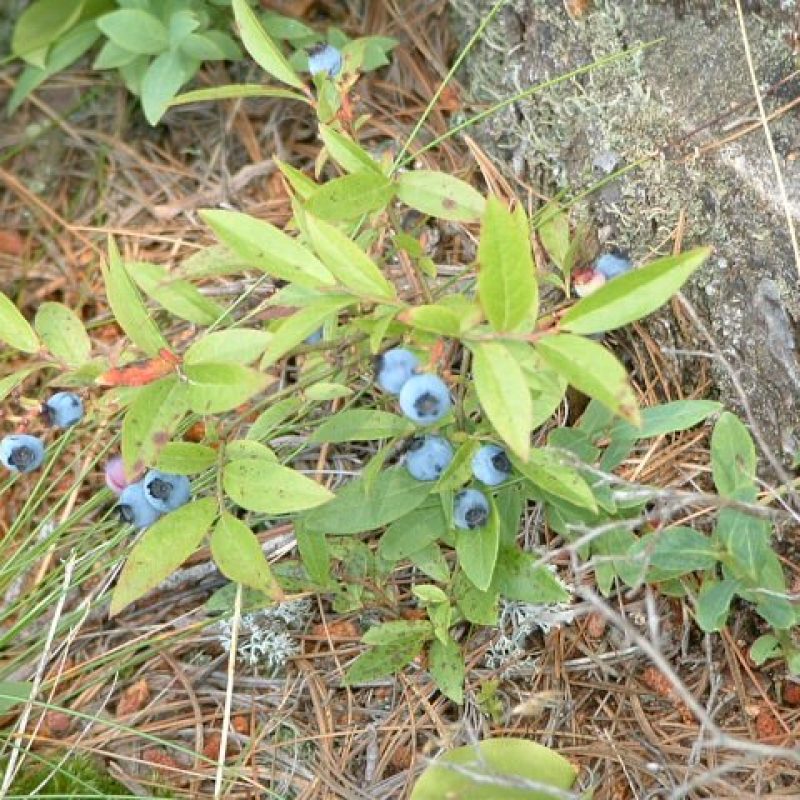
Lowbush Blueberry
Scientific name
Vaccinium angustifolium
Description
The Lowbush Blueberry is a low growing, deciduous shrub that only reaches about 60 cm in height. This species grows erect, with many spreading and ascending branches. New branch growth is soft and green-brown in colour, while older branches are woody and have shredded looking bark. The leaves are small, simple leaves alternately arranged, and have finely serrated margins. During the fall, this shrub's lustrous blue-green leaves turn into an electrifying bronze, scarlet or crimson colour. Clusters of small, white, bell-shaped flowers bloom between May and June. By July, the flowers give way to clusters of edible blueberries. These berries provide a significant food source for a variety of bird and mammal species.
Planting conditions
Lowbush Blueberry grows best in normal to dry conditions with full or partial sun exposure. It prefers well-drained, acidic, sandy soil types. It is tolerant to some shade but will produce more blooms and fruit with more sun exposure. Lowbush Blueberry is more tolerant to dry conditions than other Blueberry species, which typically prefer wet conditions. This shrub can be naturally found in sandy prairies, rocky bluffs, and along sandy shoreline slopes.
Details
-
Plant height:
- Max 1.5m
- Max 2m
- Max 3m
- Any
-
Moisture level:
- Dry
- Normal
- Moist
-
Light conditions:
- Full sun
- Partial sun
-
Soil type:
- Sandy
- Loamy
- Rocky
-
pH:
- Acidic
-
Depth:
- Potted
- Bareroot
-
Eco Zone:
- 0a
- 0b
- 1a
- 1b
- 2a
- 2b
- 3a
- 3b
- 4a
- 4b
- 5a
- 5b
-
Plant type:
- Shrub
-
Height:
- 60 cm
-
Spread:
- 1 m

